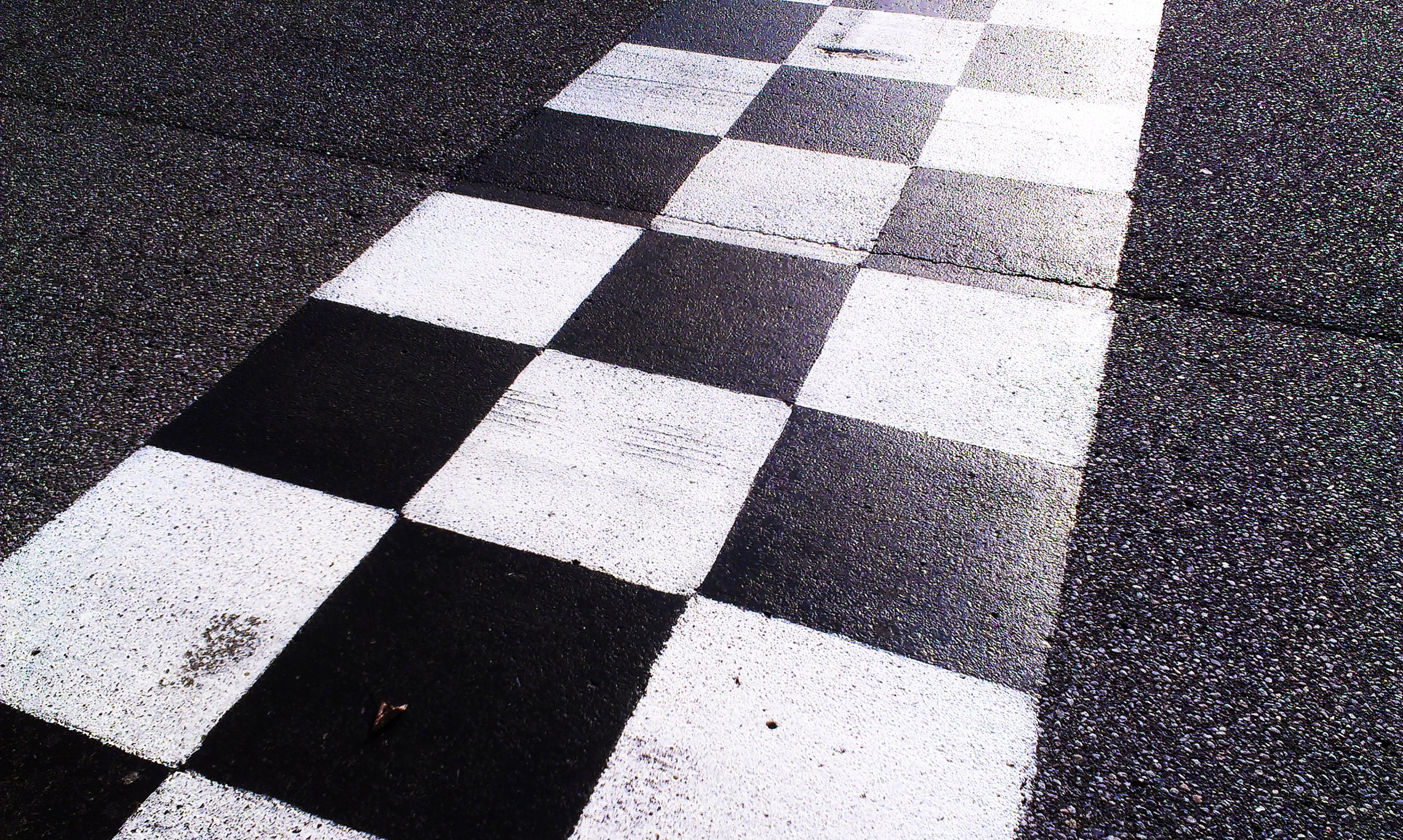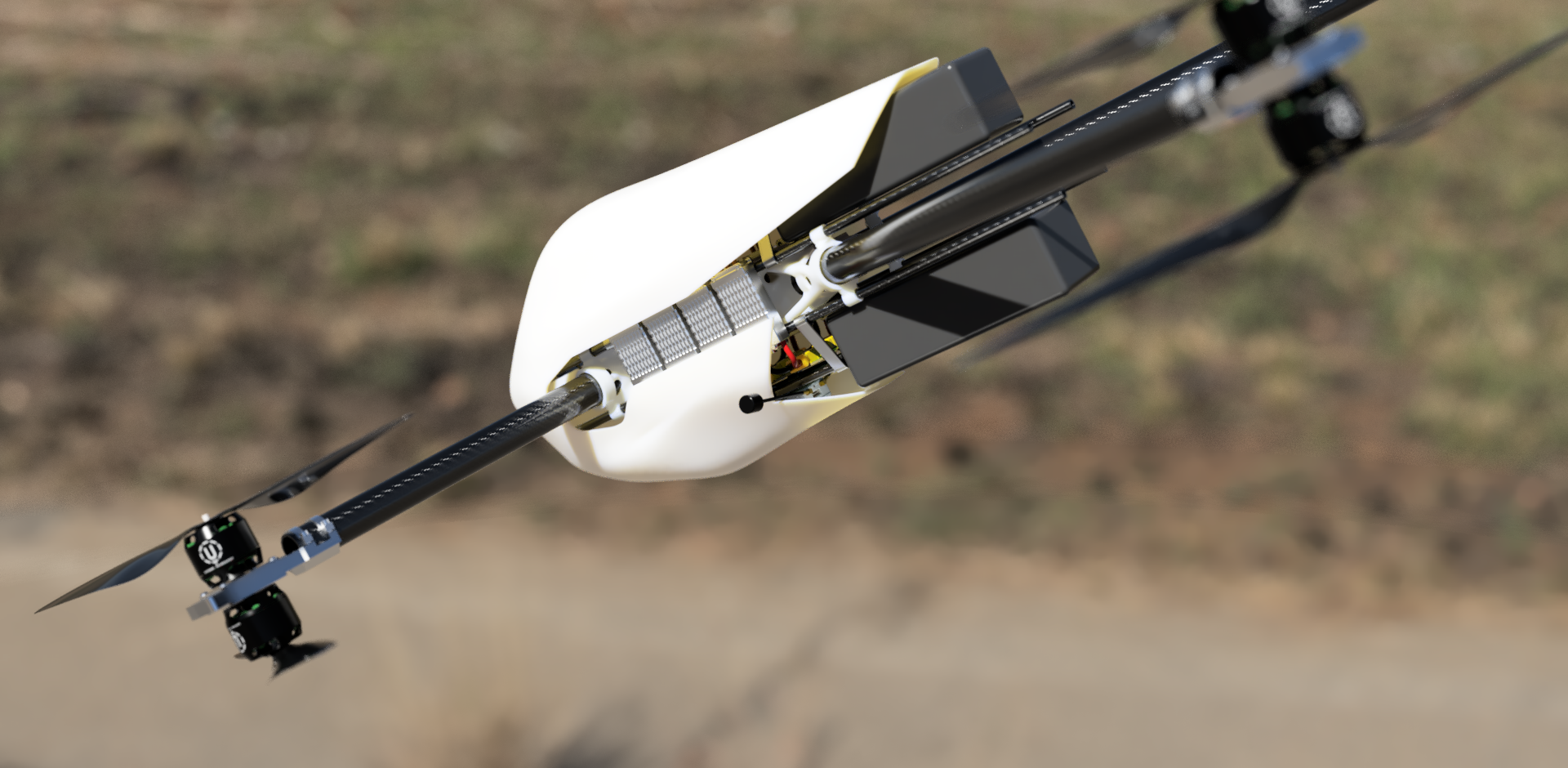Agility and Tilt during high performance drone racing
Are you curious about the exa series by Airspeeder, the first-ever flying car racing or eVTOL competition set to revolutionize the world of racing?
Since Airspeeder released footage of their inaugural racing event, many people have been asking us the same question: "Why does it look so dull?" Don’t get us wrong! We love the Airspeeder concept and just want to show you the physics behind it! So let’s answer that question and let you know that the exa series is going to be an exciting and groundbreaking competition, despite the physics at play.
Note: Keep in mind that we do not have official data from Airspeeder. Our results rely purely on our experience and calculations.
Agility
If you've ever marveled at the high-speed, agile maneuvers of FPV racers, you might be wondering why the exa series by Airspeeder isn't quite as impressive in terms of agility. For one, the aircraft in the exa series have much higher inertia, making it harder to move them as nimbly as an FPV racer. Plus, if they tried to scale up the forces to match an FPV racer, the G forces would likely be too much for most pilots to handle
Tilt
Another thing many people have worried about is the comparatively shallow tilt angle. You need to know that on a multi-copter this tilt angle is determined by two forces: Drag and Gravity. A heavier drone needs to produce more thrust in the upwards direction to stay airborne, resulting in a shallower tilt angle. Beyond that, a drone with the same weight but higher drag requires a higher tilt angle to overcome the drag force which points in the horizontal direction. This means that gravity and drag have opposite effects on the tilt angle.
An Airspeeder Mk3 with the forces during tilting noted.
By visualizing the forces at play and creating a force triangle, you can easily understand the complex physics at work and find a mathematical solution. This can be especially helpful when it comes to understanding the tilt angle of a drone or aircraft, as it's determined by the interplay of drag and gravity forces. By carefully analyzing the force triangle, you can come up with a formula that accurately predicts the tilt angle and helps you better understand the mechanics at play.
The derived angle looks like this. This formula is used to calculate the tilt angle (β) of a drone or aircraft. The tilt angle is the angle at which the aircraft is tilted relative to the ground, and it is determined by the interplay of the drag force (cD) and the gravitational force (g). The coefficient of drag (cD) is a measure of how much the air resists the movement of the aircraft, while the gravitational constant (g) is a measure of the strength of the gravitational pull.
The air density (p), mass (m), and area (A) of the aircraft also play a role in the tilt angle. The air density is a measure of the mass of the air in a given volume, while the mass of the aircraft is a measure of the amount of matter it contains. The area of the aircraft is a measure of the size of the surface that is exposed to the air.
The formula uses the inverse tangent function (arctan) to calculate the tilt angle based on these variables. Essentially, it is finding the angle at which the aircraft needs to be tilted in order to balance the forces of drag and gravity. The result is expressed in degrees and is subtracted from 90° to give the final tilt angle.
You can see very well how each change in those parameters has an effect on the final tilt angle of the aircraft.
Let’s take that knowledge to the test and gradually increase the size of an imaginary multicopter from the size of an FPV racer to an Airspeeder vehicle. As the size of the eVTOL increases, the mass grows cubically while the area only grows quadratically. This means the mass grows much faster than the area, resulting in a decreased tilt angle for the aircraft. In the following chart we have compared the difference in the tilt angle over speed between the two. You can strongly see the disconnect which results from the changes mentioned above.
What is Student AirRace doing about that?
At Student Airrace, we understand that dull racing, low agility, and low tilt angles can be a major issue for eVTOL racing competitions. That's why we've come up with a solution: choosing just the right maximum takeoff weight (MTOW) for our drones to still compete with high performance. By carefully selecting the MTOW, we can balance the trade-off between weight and drag to optimize the tilt angle of the drone. A lighter drone will have a higher tilt angle due to the lower weight. By finding the sweet spot in terms of weight and drag, we can achieve a high-performance drone with a tilt angle that is just right for exciting, competitive racing.
Conclusion
Despite the physics at play, the exa series by Airspeeder is still going to be an exciting and groundbreaking competition set to revolutionize the world of racing. With high-speed racing in the skies, the exa series is sure to be a thrill pilots and spectators. Don't miss out on this groundbreaking event - stay tuned for updates on the Airspeeder and other eVTOL racing topics and get ready to experience the future of racing!
Author:
Janis Mauch
Founder of Student AirRace
janis.mauch@student-airrace.com








